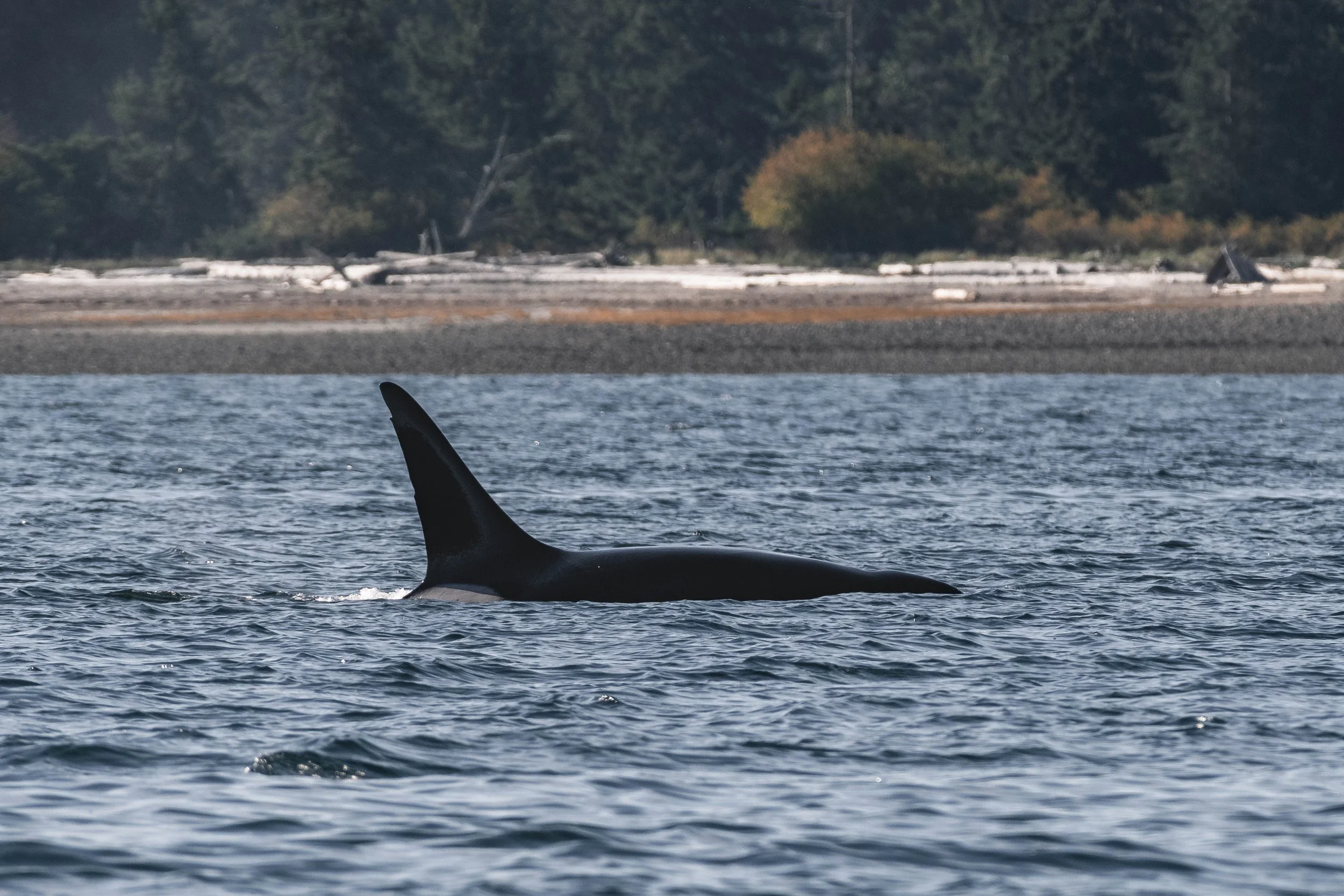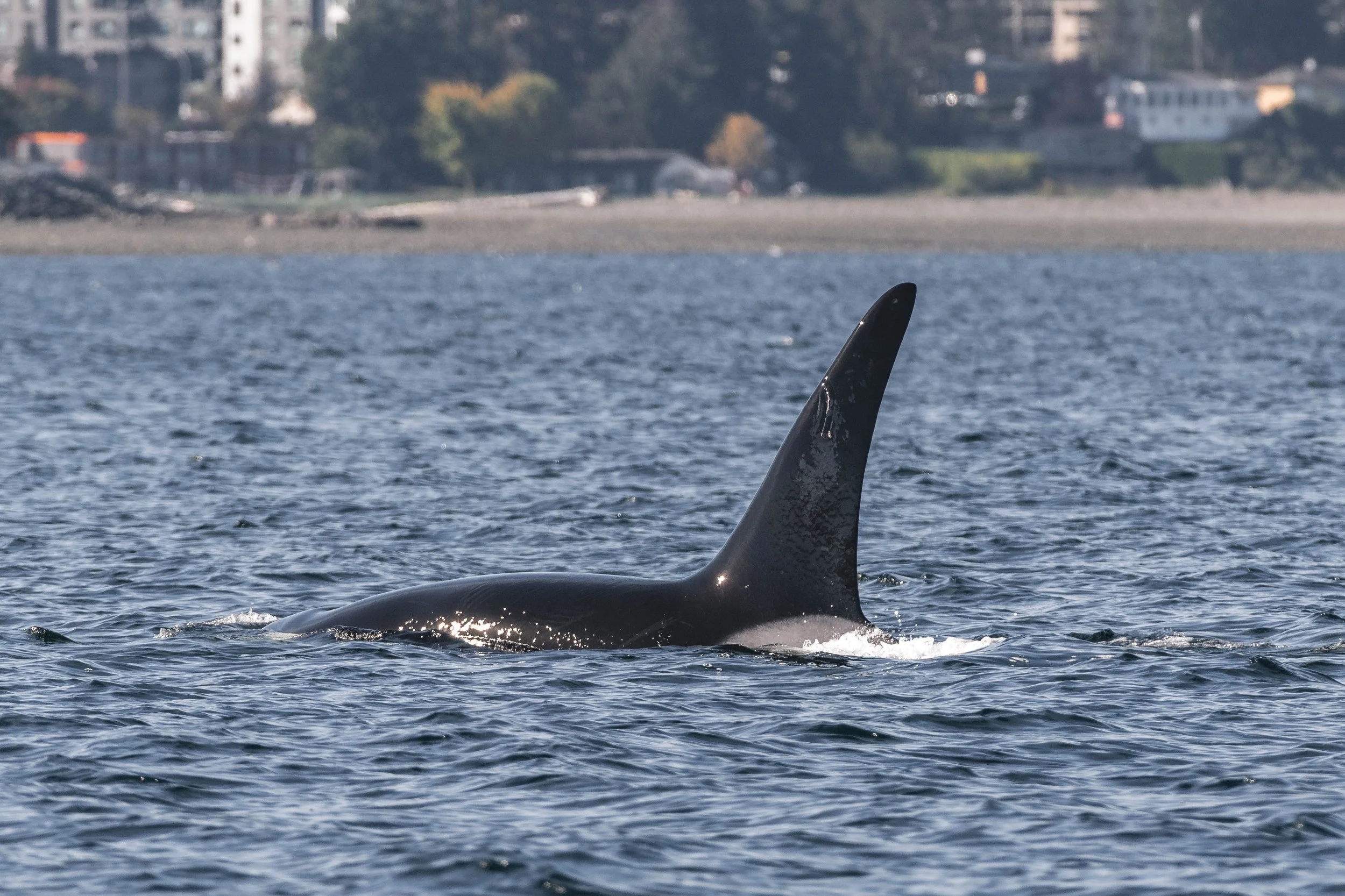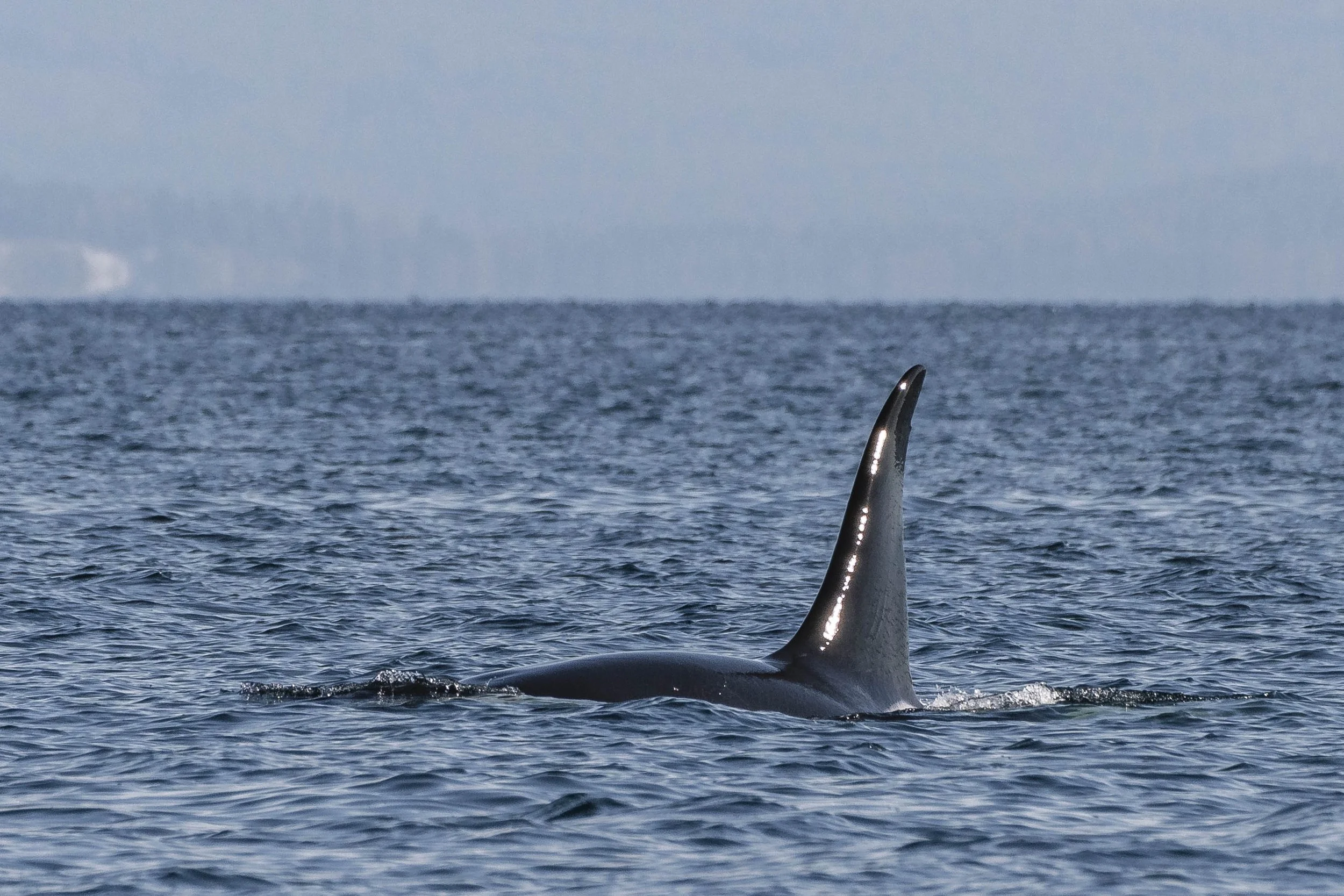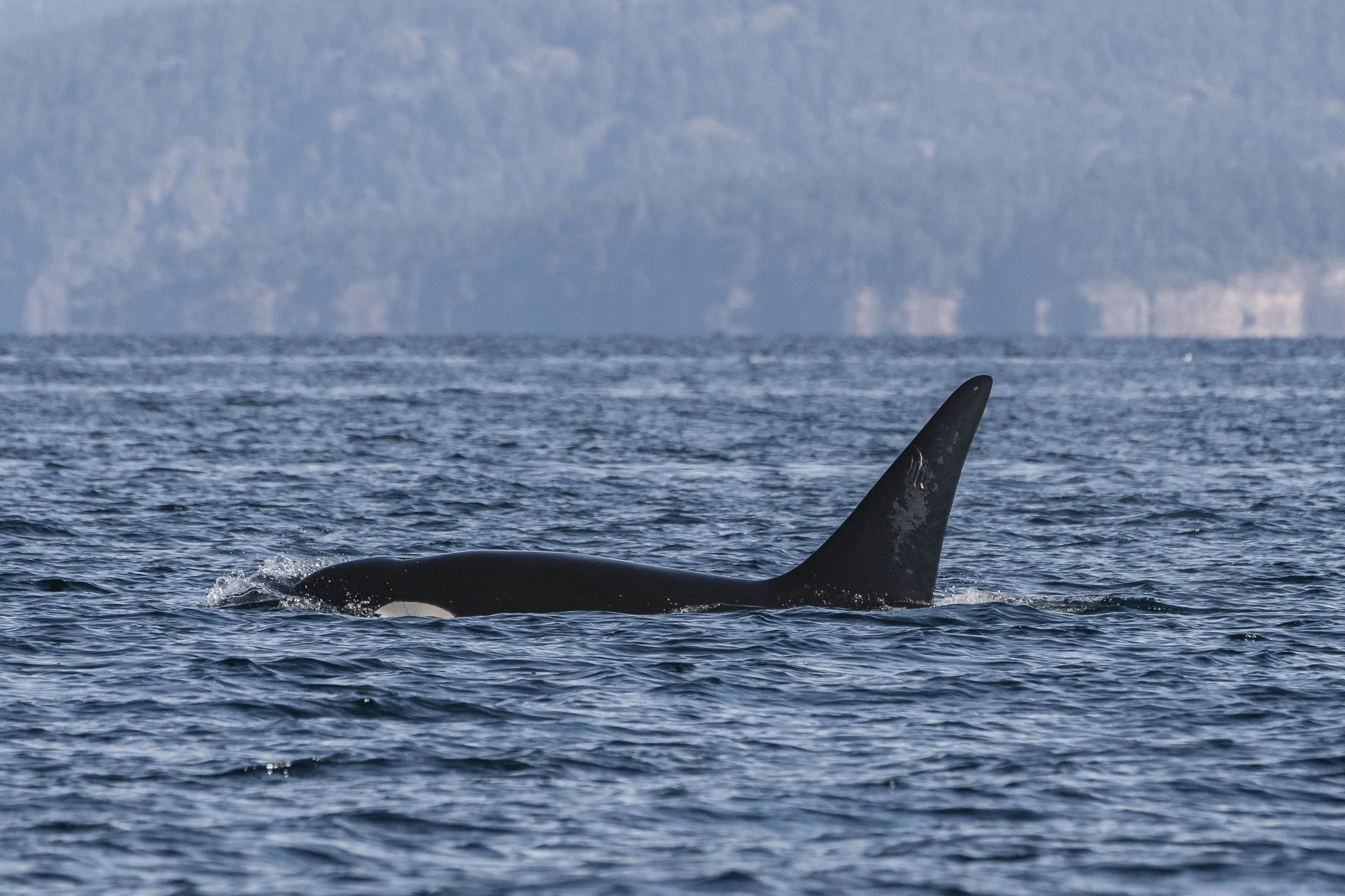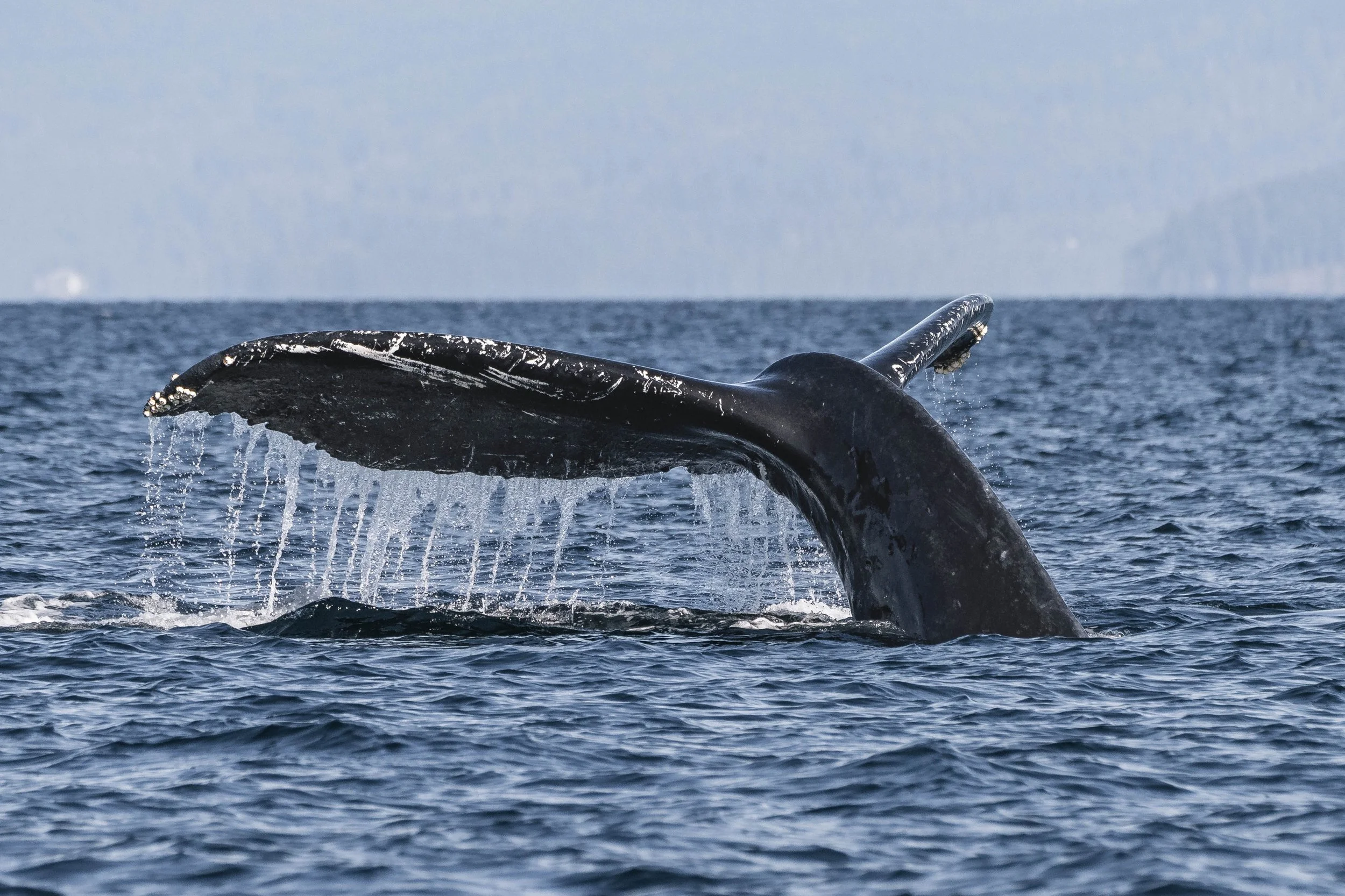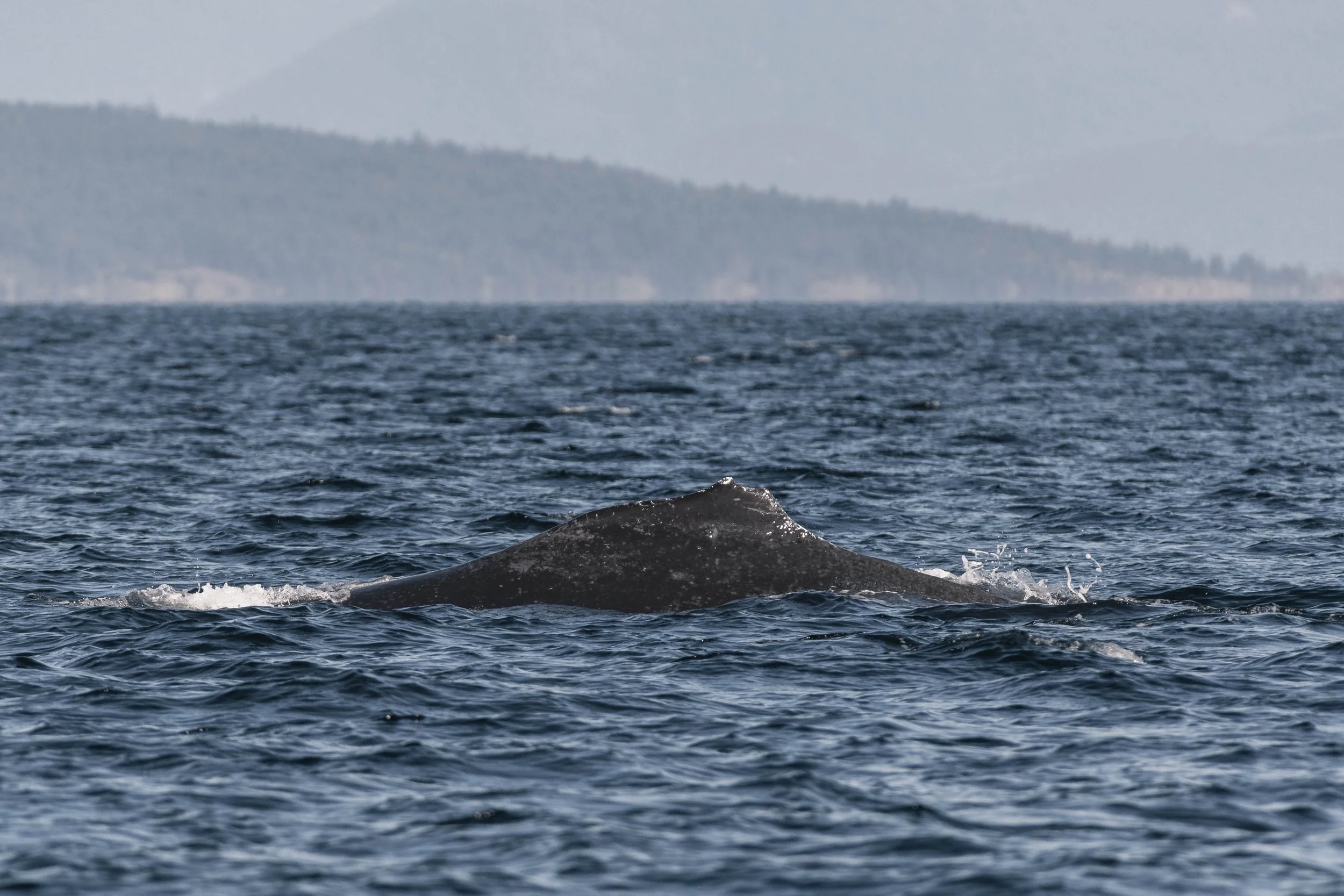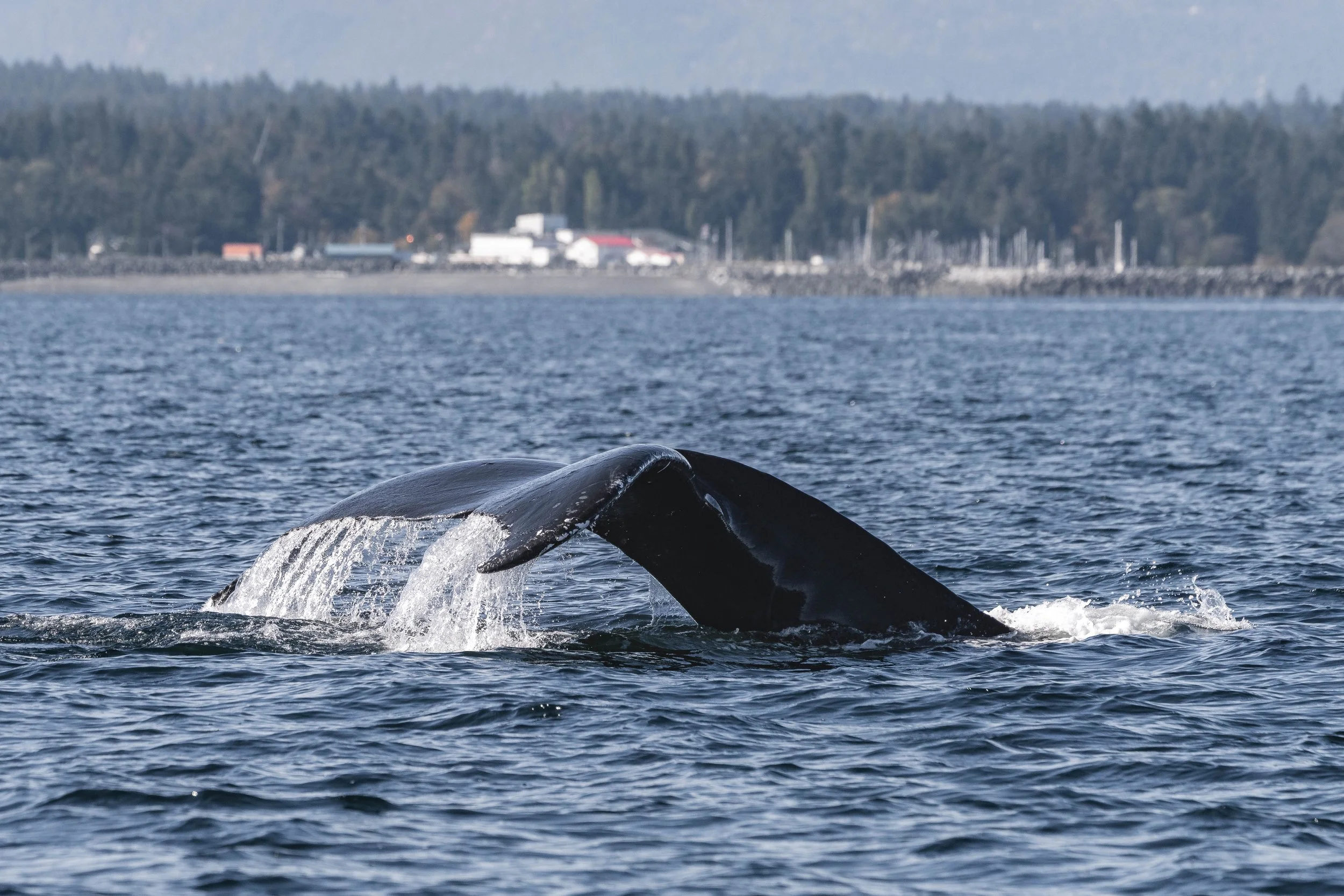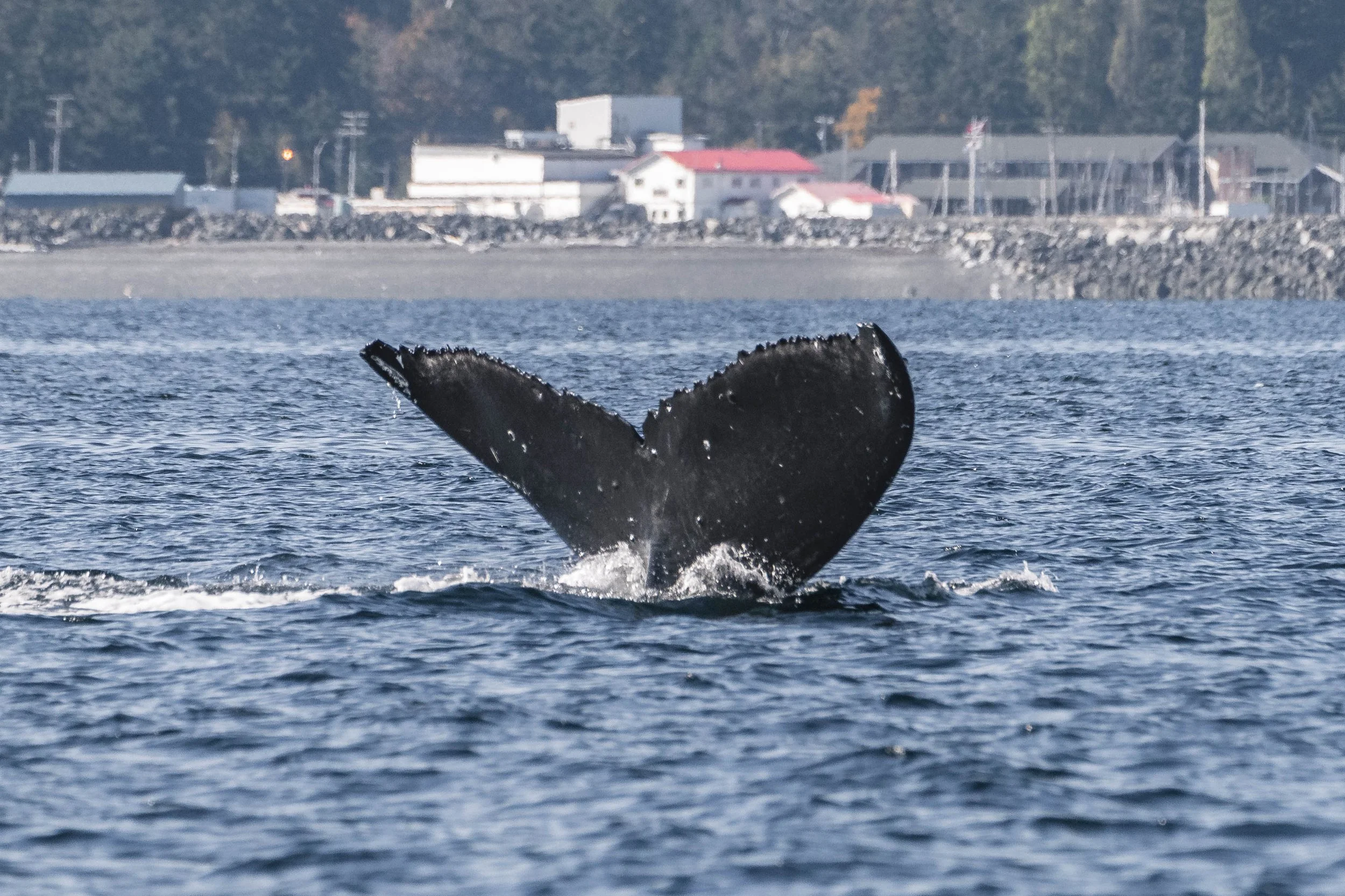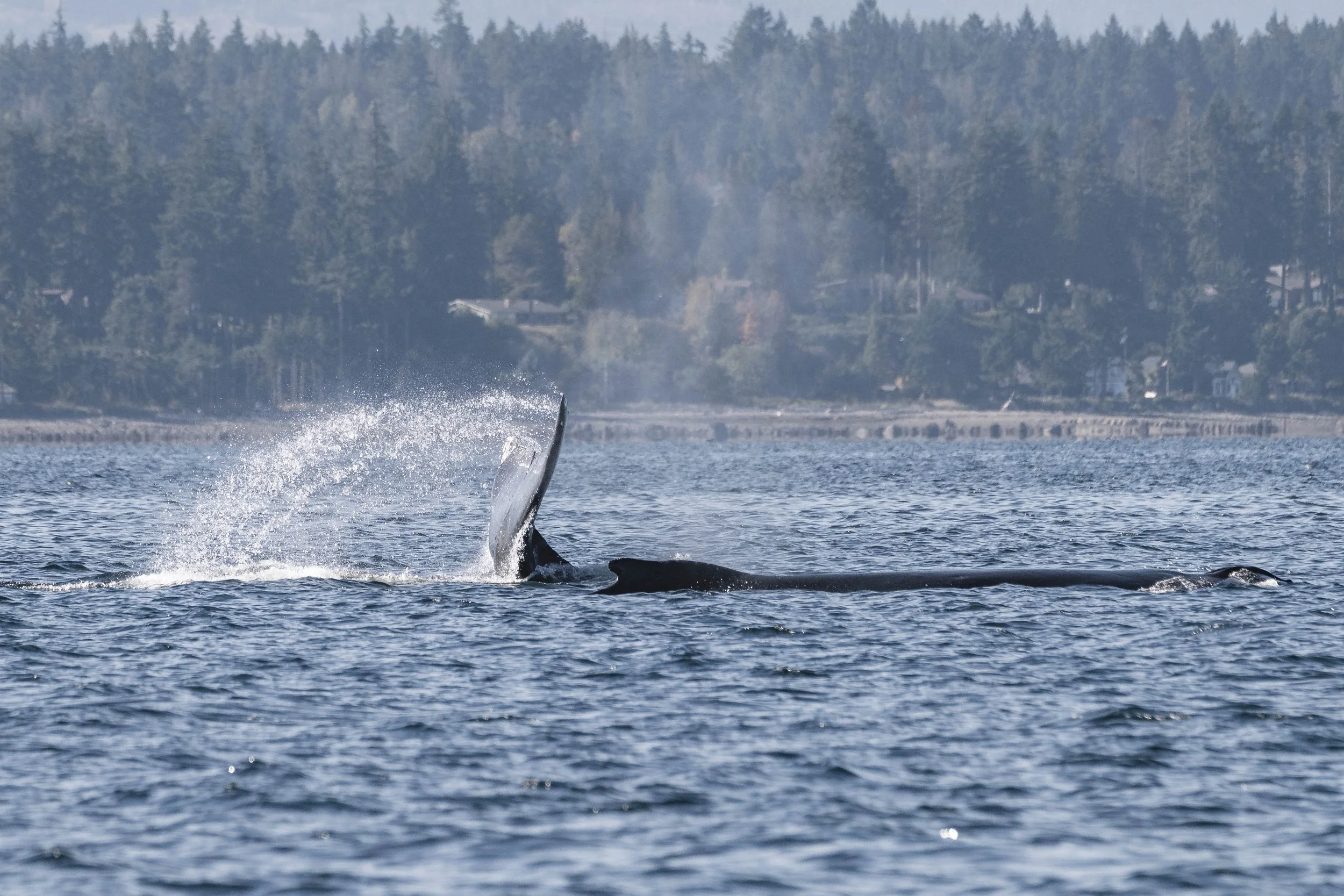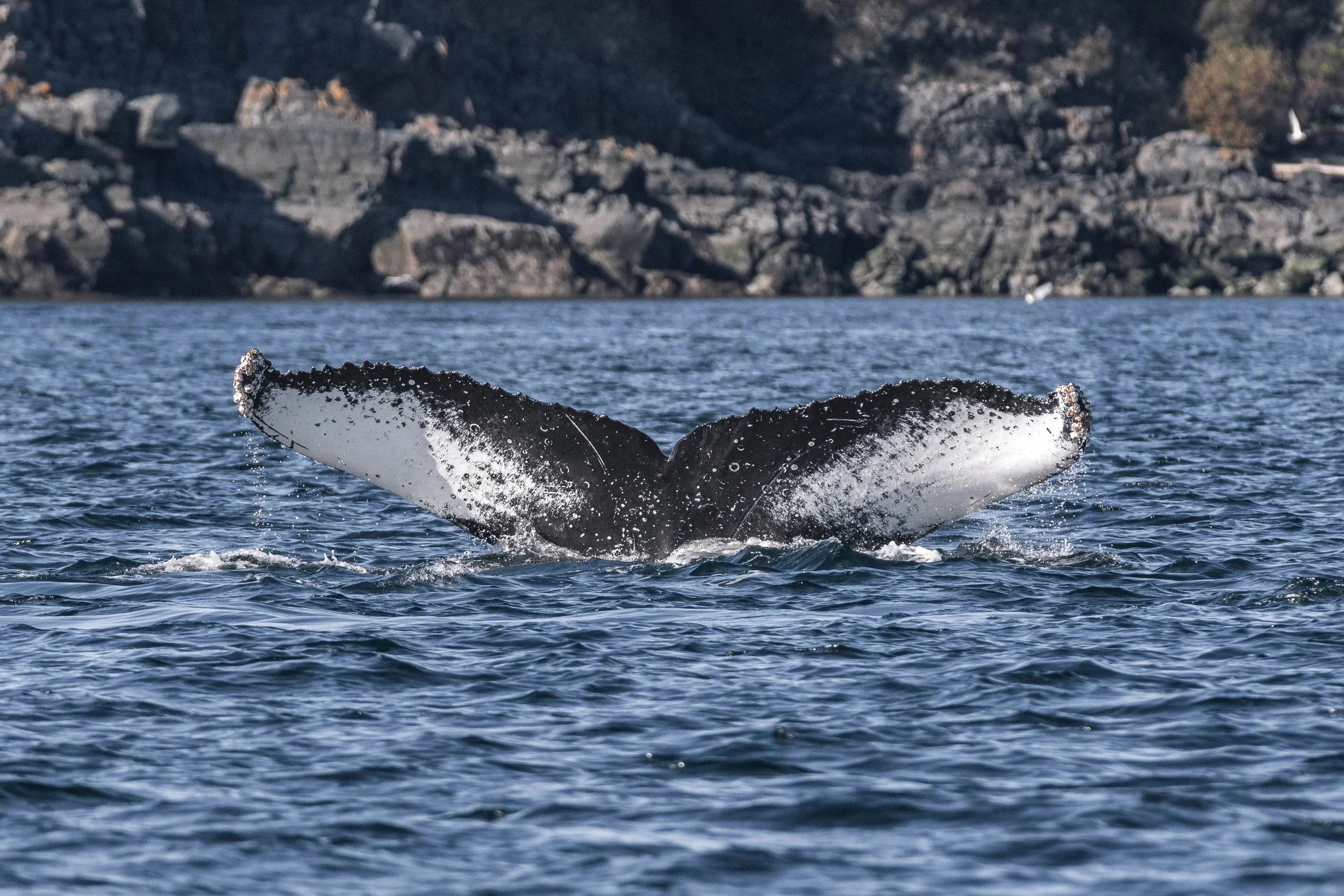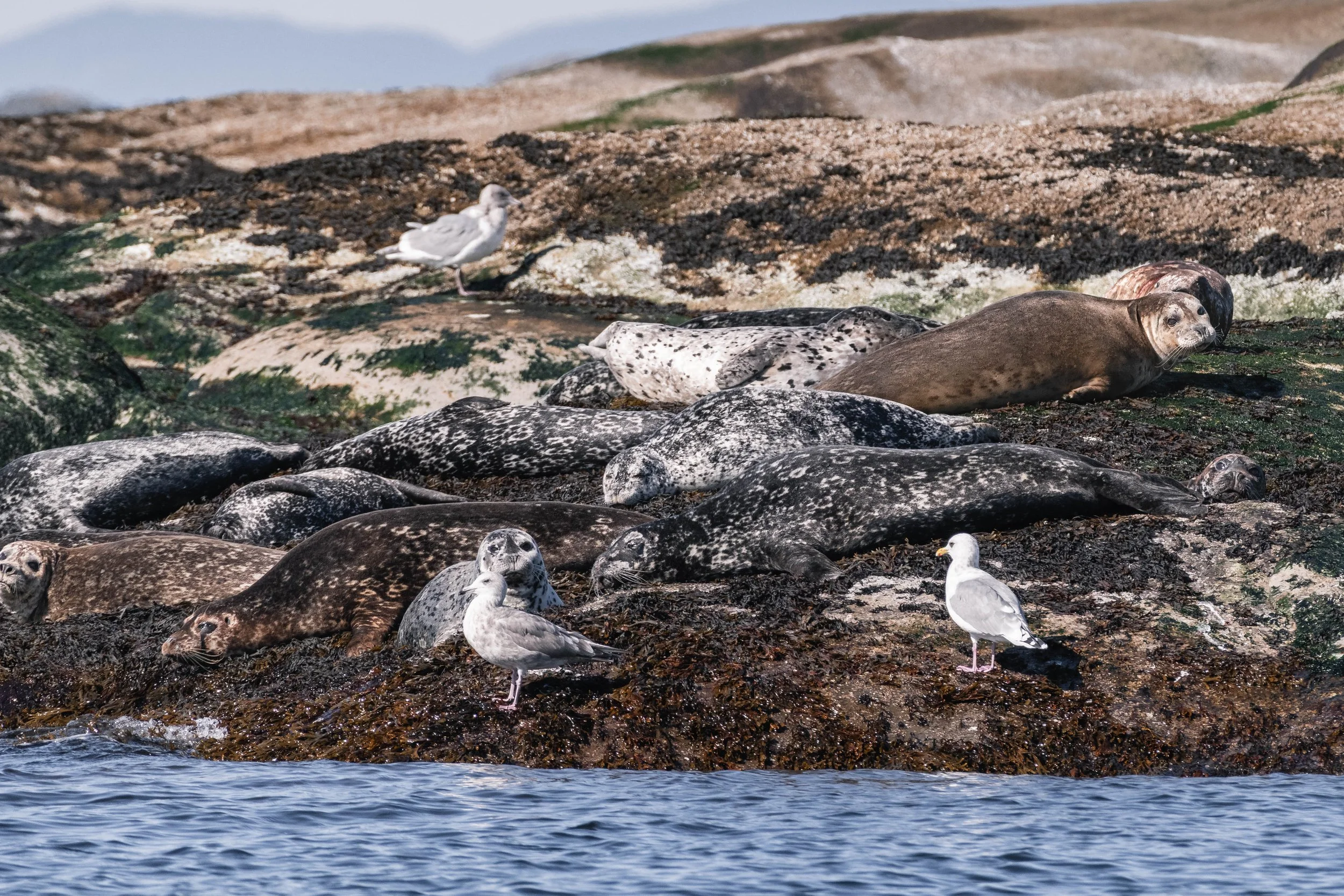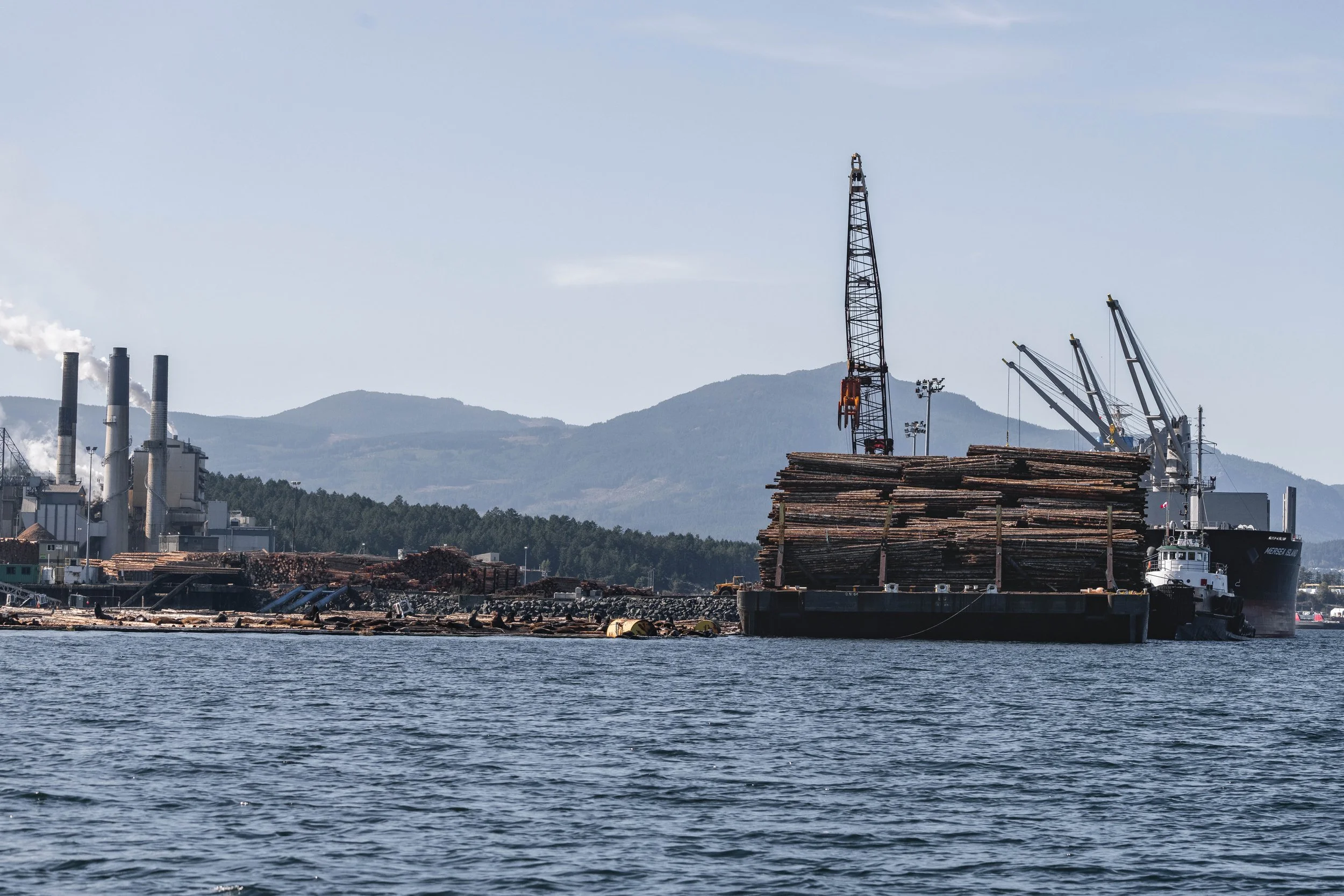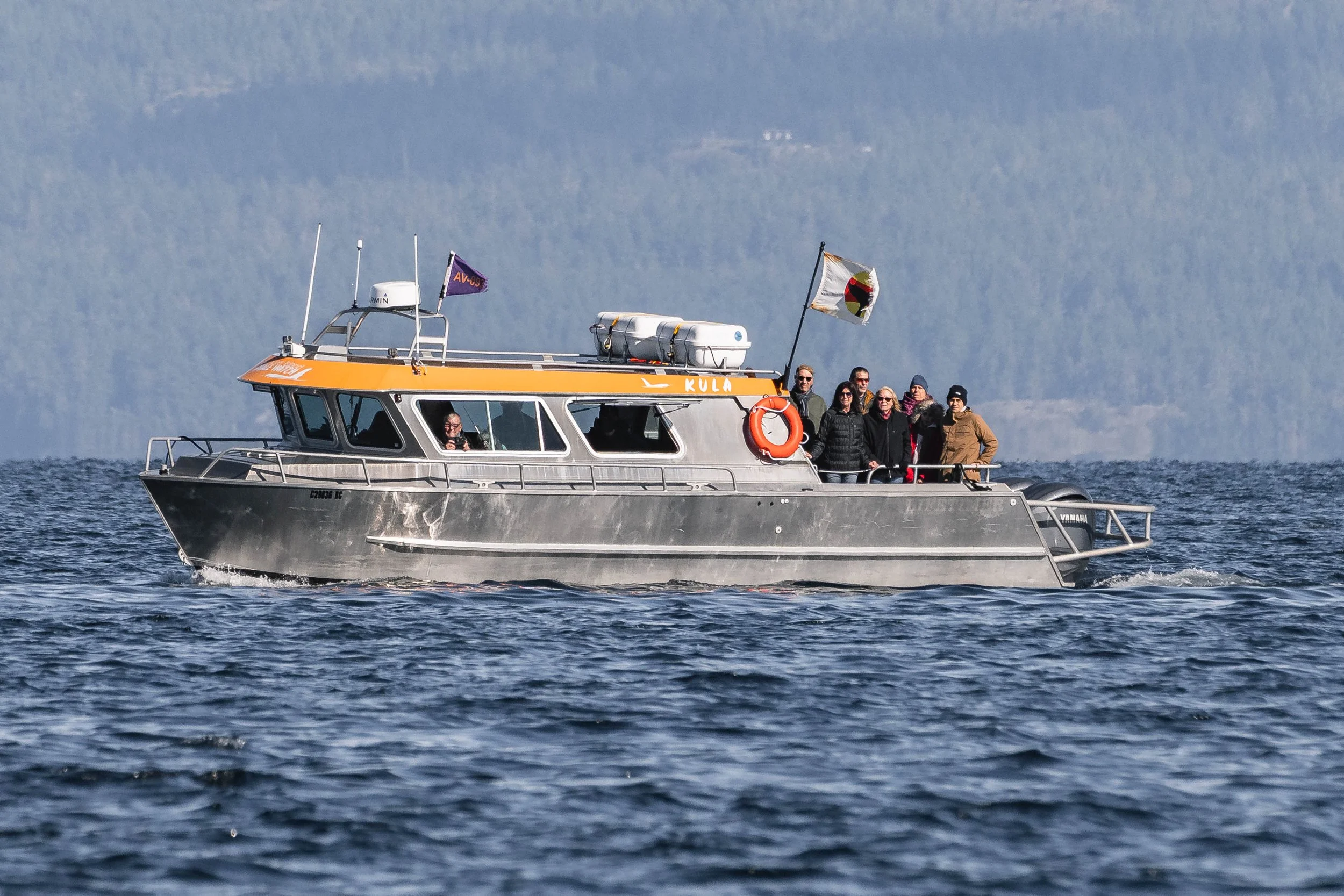October 6, 2025 - The T060 brothers visit Rathtrevor, and six humpbacks spotted in the Strait
The sun was shining across the Salish Sea as our vessels, Kula and Cascadia, set off for another day of whale watching adventure. With calm waters and an early report of whales to the north, we began heading up the Strait of Georgia, scanning the horizon for signs of dorsal fins, flukes, or blows.
Our journey led us to a small rocky island just off Rathtrevor Beach - Mistaken Island - where a pair of tall, black dorsal fins was spotted. As we approached, we began snapping photos to identify the pair. I t was none other than the T060 brothers, T060D Onca and T060E Lynx:
T060D Onca ♂ (2004)
T060E Lynx ♂ (2008)
These brothers have been travelling along our coastline regularly lately. The T060 matriline members have an interesting scheme for their nicknames, with their naming theme revolving around cats! Onca and Lynx’s mother, T060 Panthera, was named after the genus of large cats that includes lions, tigers, leopards, snow leopards, and tigers. Her sons’ names follow suit - Onca comes from Panthera onca, the scientific name for the jaguar, while Lynx was nicknamed for the ‘tufted’ edge of his dorsal fin that resembles a lynx’s ear.
These two brothers have been venturing away from their natal matrline for some time now - an unusual move for male Transient (Bigg’s) orca, who typically remain close to their mothers their whole lives. During our encounter, we noticed that Onca was sporting some fresh scratches down his dorsal fin, likely during a seal or sea lion hunt. These marks will likely heal into lasting scars, giving him new, identifiable features for years to come.
After spending time watching the brothers travel gracefully along, Kula and Cascadia split up to broaden the search for our other commonly spotted whale species, the humpback! And what a success that turned out to be!
Kula came across a pair of humpbacks, travelling and occasionally fluking. These two were confirmed to be El Diablo (BCX0132) and Crater/Mensa (BCX1565). El Diablo was fluking with beautifully high dives, while Crater was giving shallower dives and not showing much of their tail. Thankfully, they are easily recognized by the unique shape of their dorsal fin.
Meanwhile, Cascadia found another duo - identified as Kappa’s 2022 calf (KEX0086) and Barge Boy (KEX0078) - who were being especially surface active. While we observed, they were spotted tail flicking, a behaviour that can be used to stun fish near the surface when feeding.
As the day went on, the boats played a little game of “musical humpbacks,” with Cascadia meeting up with Kula’s sighting and Kula heading out to continue searching. After reconnecting with El Diablo and Crater, they observed Crater lift their rostrum out of the water and roll onto their side. While Crater was busy likely feeding, El Diablo appeared to be napping nearby. Kula, on the other hand, found yet another pair of humpbacks. This time, it was Wisp (BCY1464) travelling alongside Kelpie (BCY1276). The pair was pectoral slapping as they made their way along, side-by-side.
The day’s adventure didn’t end with the whales, though! On their way back toward Nanaimo, Kula stopped at Snake Island, where several Harbour Seals were hauled out along the rocks, basking in the sunshine. Some were spotted galumphing their way back down to the waters for a swim or a bite to eat.
For the final stop of the day, the boats made their way over to Harmac Pulp Mill, a favourite hangout for the loud and lively California Sea Lions, with the occasional Steller Sea Lion mixed in. They were sprawled out on the log booms, barking and stretching in the sunshine, while a nearby barge was being loaded high with logs for transport.
After a day filled with whales, seals, and sunshine, both Kula and Cascadia returned home to Nanaimo, full of stories, photos, and memories from another incredible day on the Salish Sea.
This trip’s photos were taken by Marine Naturalists Val Watson and Aly Kohlman - please enjoy!
T060E Lynx with his distinct dorsal fin visible. Photo by Aly Kohlman.
T060E Lynx with his eyepatch above the surface. Photo by Aly Kohlman.
T060D Onca with his new scratches. Photo by Aly Kohlman.
T060E Lynx travelling. Photo by Val Watson.
T060E Lynx with a tiny bit of his eyepatch visible. Photo by Val Watson.
A nice clear view of T060D and his new dorsal wound. Photo by Val Watson.
T060D Onca travelling. Photo by Val Watson.
T060D Onca with mountains behind him. Photo by Val Watson.
El Diablo’s fluke. Photo by Aly Kohlman.
El Diablo diving. Photo by Val Watson.
El Diablo (front) and Crater (back). Photo by Aly Kohlman.
El Diablo diving. Photo by Aly Kohlman.
Crater’s dorsal fin. Photo by Aly Kohlman.
Barge Boy diving. Photo by Val Watson.
Barge Boy’s fluke. Photo by Val Watson.
Kappa’s 2022 calf’s fluke. Photo by Val Watson.
Tail flicking. Photo by Val Watson.
Kappa’s 2022 calf tail flicking, with Barge Boy travelling beside them. Photo by Val Watson.
Kelpie’s fluke. Photo by Aly Kohlman.
Wisp’s fluke. Photo by Aly Kohlman.
A rainbow of Harbour Seals resting on shore. Photo by Aly Kohlman.
Gulls also were meandering around Snake Island. Photo by Aly Kohlman.
A Bald Eagle at the top of Snake Island. Photo by Aly Kohlman.
A Pacific Loon in flight. Photo by Val Watson.
Snoozing on the log booms. Photo by Aly Kohlman.
The sea lions at Harmac. Photo by Val Watson.
The juxtaposition of nature versus industry. The sea lions from above are on the log booms to the left. Photo by Val Watson.
A River Otter dancing at the docks. Photo by Val Watson.
Cuddle time with the River Otters. Photo by Val Watson.
A very interesting angle of one of our Great Blue Herons. Photo by Aly Kohlman.
Wings spread, drying off and warming up. Photo by Aly Kohlman.
Kula watching the T060 brothers. Photo by Val Watson.

